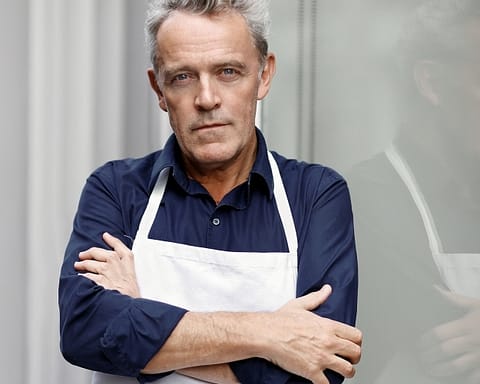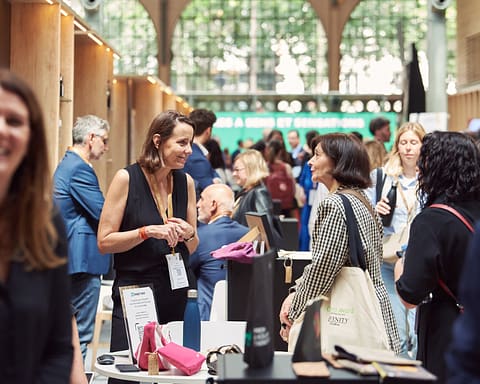[vc_row njt-role=”people-in-the-roles” njt-role-user-roles=”administrator,editor,author,armember”][vc_column][vc_column_text]
As seen in the first part, department stores and luxury boutiques compete in ingenuity to capture the attention of their customers and arouse their desire. More than a scenographic design, it is about knowing and serving the customer better. In this field, they can make the difference with e-commerce platforms unable to provide a wide range of emotions born of a unique, memorable, and fundamentally human customer experience.
Dive into the heart of retail, the historical model of luxury distribution, in the light of the post-Covid era and the extended virtual worlds of Web 3.
The shopping environment: a pillar of the luxury customer experience
In December 2022, the MAD consulting firm – specialized in luxury retail – released a new study dedicated to the customer experience entitled “Process emotions.” But if emotion cannot be decreed, it is necessary to define and measure the conditions of its expression. And in this field, the muffled and designed setting of the boutique and the physical contact with the product contribute greatly to it.
“It’s not just a matter of having a fluid experience, it’s important that this experience enchants you, that it transports you to the height of what you expect from a House”, underlines Delphine Vitry (MAD).
In addition, Nicolas Rebet (Retailoscope) notes more identity-based spaces within each House where “the interiors are less standardized but driven by repetitions of themes that are very different from each other.”
Pop-up spirit
Nurturing the desirability of the point of sale starts by encouraging customers to visit the store through ephemeral animations. In this respect, retailtainment – where the store becomes a vector of entertainment – is experiencing a resurgence of interest after the deprivation of outings due to the covid. The pop-up store – a mini conceptual ephemeral store that appeared around 2010 – has evolved to erase the transactional aspect and offer ever more surprising immersive experiences. If China is leading the way in terms of creativity, Europe is more image-oriented. Just think of Dior’s ice cream facade in the Lake Songhua Resort or the candy pink “Tabby Shop” ice cream trucks of American leather goods manufacturer Coach in Singapore.

The model is both itinerant and versatile, as with the Carré Club Hermès. From Dubai to Ho Chi Minh City, via Paris, Los Angeles, Milan, New York, and Singapore, this temporary space allows people to sing a song, attend a design conference, learn the art of knotting a scarf, or practice skateboarding all in the same place.

Ephemeral facades
Inspired by the rhythm of collaboration launches (drops), these animations are modeled on the desires of Generation Z: unprecedented, limited in time, and visually adapted to the virality of social networks.
In Paris, storefronts are also becoming visual, even if their adornments are only temporary. Thus, the Saint Laurent store on the Champs-Elysées is covered with a reflective surface, the time to make a new skin. On their side, the Valentino Saint Honoré and Paco Rabanne stores on Avenue Montaigne took the opportunity of the Fashion Week to dress up: Pink PP in total look for the first one and armor chained with silver, bronze, and golden discs for the second one.

Like the House of Dior and Luca Albero’s scenographies, French luxury trunk maker Louis Vuitton is a master in the art of these traffic-generating happenings in stores. For example, the recent collaboration with Japanese artist Yayoi Kusama has resulted in some of the most photogenic giant installations on the facades of its stores from Paris to New York, including Seoul, Tokyo, and Shanghai.
Modeled on the practices of these young generations, enamored of short videos, multiplying the dynamic angles of view on Tiktok, not one of the installations is alike. A humanoid automaton as if painting these signature motifs from the window in New York, a 3D avatar emerging from a giant anamorphic billboard in Tokyo, or a monumental inflatable balloon wrapped around the façade of the flagship store on the Champs-Elysées: all very creative variations on the same theme: the red hair so dear to the Japanese artist and her graphic universe made of colorful peas and multicolored pumpkins.

“Significant investments with, at the end of the day, visibility and UGC (User Generated Content or social media content created by Internet users). You only have to look at the millions of views generated on social networks worldwide with these different installations to be convinced,” explains Nicolas Rebet (Retailoscope).
However, behind the strong architectural bias likely to capture an aspirational and versatile clientele, the challenge for luxury brands is to make them stay longer in the store, with additional sales at the end of the day.
Store storytelling
If there is one area in which the luxury boutique remains unbeatable, it is store storytelling. “What we expect from a store concept is that it tells the story of the luxury brand – its history, its heritage, its codes, its values – while at the same time serving a commercial performance and a unique experience in the image of the brand”, says Delphine Vitry (MAD). However, in order to retain attention, increase word of mouth and convert into a purchase, the physical point of sale must go far beyond that.

The Hermès flagship store on Madison Avenue in New York, which will open in 2022, perfectly embodies the multi-polar function expected of a physical retail outlet, thanks to the comfort of its sales areas and lounges conducive to relaxation and tasting.
For Nicolas Rebet (Retailoscope), “this magnificent setting, which is reflected in the city’s art deco architecture, perfectly captures the alliance between modernity and tradition that characterizes the House’s saddlery spirit. In addition to the aesthetics, there is a real desire to make the customer stay.” He adds, “Moreover, like an allegory of the accession to the dream, the client must climb many steps to meet the most iconic pieces of leather goods, all under a magnificent domed glass roof with a hanging garden in the heart of New York, so much for a rarity.”
Hotel codes
Thus, the luxury boutique is increasingly adopting the codes of the hotel industry, particularly via bar and restaurant areas. Like the Dior 30 Montaigne flagship store in a Parisian mansion, the sales space has become a living space in its own right, combining a café, restaurant, indoor gardens and exhibition space.
Three years of work allowed architect Peter Marino to rethink the 10,000 square meter space that housed Christian Dior’s first workshops in 1946, across from the Plaza Athénée Palace.

A model entirely focused on a holistic vision of the art of living, unlike Audemars Piguet’s AP House. Inaugurated in Milan in 2017, this model opens access to an exceptional place exclusively by appointment. Here, the customer is not encouraged to buy a timepiece from this independent Swiss watch manufacturer. “The boutique becomes a lounge, modeled after a private salon, where it is possible to have guests over for dinner, as well as sip a house cocktail at the bar.” The concept has since spread to Zurich, New York and recently, Bangkok and Hong Kong. A bar integrated into the boutique that has made its way into the luxury sector, if we are to believe the Hermès store on Madison Avenue, which has no less than three bar areas spread over three floors.

For Nicolas Rebet (Retailoscope), “We’re on a logic of a luxury boutique that will transform and become more welcoming.” An ambition that relies mainly on the figure and personality of the sales consultant.
Read also > [Investigation] What’s new in Luxury Retail? (Episode n°1)
Featured photo : ©Presse[/vc_column_text][/vc_column][/vc_row][vc_row njt-role=”not-logged-in”][vc_column][vc_column_text]
As seen in the first part, department stores and luxury boutiques compete in ingenuity to capture the attention of their customers and arouse their desire. More than a scenographic design, it is about knowing and serving the customer better. In this field, they can make the difference with e-commerce platforms unable to provide a wide range of emotions born of a unique, memorable, and fundamentally human customer experience.
Dive into the heart of retail, the historical model of luxury distribution, in the light of the post-Covid era and the extended virtual worlds of Web 3.
The shopping environment: a pillar of the luxury customer experience
In December 2022, the MAD consulting firm – specialized in luxury retail – released a new study dedicated to the customer experience entitled “Process emotions.” But if emotion cannot be decreed, it is necessary to define and measure the conditions of its expression. And in this field, the muffled and designed setting of the boutique and the physical contact with the product contribute greatly to it.
“It’s not just a matter of having a fluid experience, it’s important that this experience enchants you, that it transports you to the height of what you expect from a House”, underlines Delphine Vitry (MAD).
In addition, Nicolas Rebet (Retailoscope) notes more identity-based spaces within each House where “the interiors are less standardized but driven by repetitions of themes that are very different from each other.”
Pop-up spirit
Nurturing the desirability of the point of sale starts by encouraging customers to visit the store through ephemeral animations. In this respect, retailtainment – where the store becomes a vector of entertainment – is experiencing a resurgence of interest after the deprivation of outings due to the covid. The pop-up store – a mini conceptual ephemeral store that appeared around 2010 – has evolved to erase the transactional aspect and offer ever more surprising immersive experiences. If China is leading the way in terms of creativity, Europe is more image-oriented. Just think of Dior’s ice cream facade in the Lake Songhua Resort or the candy pink “Tabby Shop” ice cream trucks of American leather goods manufacturer Coach in Singapore.

The model is both itinerant and versatile, as with the Carré Club Hermès. From Dubai to Ho Chi Minh City, via Paris, Los Angeles, Milan, New York, and Singapore, this temporary space allows people to sing a song, attend a design conference, learn the art of knotting a scarf, or practice skateboarding all in the same place.

Ephemeral facades
Inspired by the rhythm of collaboration launches (drops), these animations are modeled on the desires of Generation Z: unprecedented, limited in time, and visually adapted to the virality of social networks.
In Paris, storefronts are also becoming visual, even if their adornments are only temporary. Thus, the Saint Laurent store on the Champs-Elysées is covered with a reflective surface, the time to make a new skin. On their side, the Valentino Saint Honoré and Paco Rabanne stores on Avenue Montaigne took the opportunity of the Fashion Week to dress up: Pink PP in total look for the first one and armor chained with silver, bronze, and golden discs for the second one.

[…][/vc_column_text][vc_cta h2=”This article is reserved for subscribers.” h2_font_container=”tag:h2|font_size:16|text_align:left” h2_use_theme_fonts=”yes” h4=”Subscribe now !” h4_font_container=”tag:h2|font_size:32|text_align:left|line_height:bas” h4_use_theme_fonts=”yes” txt_align=”center” color=”black” add_button=”right” btn_title=”I SUBSCRIBE !” btn_color=”danger” btn_size=”lg” btn_align=”center” use_custom_fonts_h2=”true” use_custom_fonts_h4=”true” btn_button_block=”true” btn_custom_onclick=”true” btn_link=”url:https%3A%2F%2Fluxus-plus.com%2Fen%2Fsubscriptions-and-newsletter-special-offer-valid-until-september-30-2020-2-2%2F”]Get unlimited access to all articles and live a new reading experience, preview contents, exclusive newsletters…
Already have an account ? Please log in.[/vc_cta][vc_column_text]Featured photo : © Presse[/vc_column_text][/vc_column][/vc_row][vc_row njt-role=”people-in-the-roles” njt-role-user-roles=”subscriber,customer”][vc_column][vc_column_text]
As seen in the first part, department stores and luxury boutiques compete in ingenuity to capture the attention of their customers and arouse their desire. More than a scenographic design, it is about knowing and serving the customer better. In this field, they can make the difference with e-commerce platforms unable to provide a wide range of emotions born of a unique, memorable, and fundamentally human customer experience.
Dive into the heart of retail, the historical model of luxury distribution, in the light of the post-Covid era and the extended virtual worlds of Web 3.
The shopping environment: a pillar of the luxury customer experience
In December 2022, the MAD consulting firm – specialized in luxury retail – released a new study dedicated to the customer experience entitled “Process emotions.” But if emotion cannot be decreed, it is necessary to define and measure the conditions of its expression. And in this field, the muffled and designed setting of the boutique and the physical contact with the product contribute greatly to it.
“It’s not just a matter of having a fluid experience, it’s important that this experience enchants you, that it transports you to the height of what you expect from a House”, underlines Delphine Vitry (MAD).
In addition, Nicolas Rebet (Retailoscope) notes more identity-based spaces within each House where “the interiors are less standardized but driven by repetitions of themes that are very different from each other.”
Pop-up spirit
Nurturing the desirability of the point of sale starts by encouraging customers to visit the store through ephemeral animations. In this respect, retailtainment – where the store becomes a vector of entertainment – is experiencing a resurgence of interest after the deprivation of outings due to the covid. The pop-up store – a mini conceptual ephemeral store that appeared around 2010 – has evolved to erase the transactional aspect and offer ever more surprising immersive experiences. If China is leading the way in terms of creativity, Europe is more image-oriented. Just think of Dior’s ice cream facade in the Lake Songhua Resort or the candy pink “Tabby Shop” ice cream trucks of American leather goods manufacturer Coach in Singapore.

The model is both itinerant and versatile, as with the Carré Club Hermès. From Dubai to Ho Chi Minh City, via Paris, Los Angeles, Milan, New York, and Singapore, this temporary space allows people to sing a song, attend a design conference, learn the art of knotting a scarf, or practice skateboarding all in the same place.

Ephemeral facades
Inspired by the rhythm of collaboration launches (drops), these animations are modeled on the desires of Generation Z: unprecedented, limited in time, and visually adapted to the virality of social networks.
In Paris, storefronts are also becoming visual, even if their adornments are only temporary. Thus, the Saint Laurent store on the Champs-Elysées is covered with a reflective surface, the time to make a new skin. On their side, the Valentino Saint Honoré and Paco Rabanne stores on Avenue Montaigne took the opportunity of the Fashion Week to dress up: Pink PP in total look for the first one and armor chained with silver, bronze, and golden discs for the second one.

[…][/vc_column_text][vc_cta h2=”This article is reserved for subscribers.” h2_font_container=”tag:h2|font_size:16|text_align:left” h2_use_theme_fonts=”yes” h4=”Subscribe now !” h4_font_container=”tag:h2|font_size:32|text_align:left|line_height:bas” h4_use_theme_fonts=”yes” txt_align=”center” color=”black” add_button=”right” btn_title=”I SUBSCRIBE !” btn_color=”danger” btn_size=”lg” btn_align=”center” use_custom_fonts_h2=”true” use_custom_fonts_h4=”true” btn_button_block=”true” btn_custom_onclick=”true” btn_link=”url:https%3A%2F%2Fluxus-plus.com%2Fen%2Fsubscriptions-and-newsletter-special-offer-valid-until-september-30-2020-2-2%2F”]Get unlimited access to all articles and live a new reading experience, preview contents, exclusive newsletters…
Already have an account ? Please log in.[/vc_cta][vc_column_text]Featured photo : © Presse[/vc_column_text][/vc_column][/vc_row][vc_row njt-role=”people-in-the-roles” njt-role-user-roles=”subscriber,customer”][vc_column][vc_column_text]































